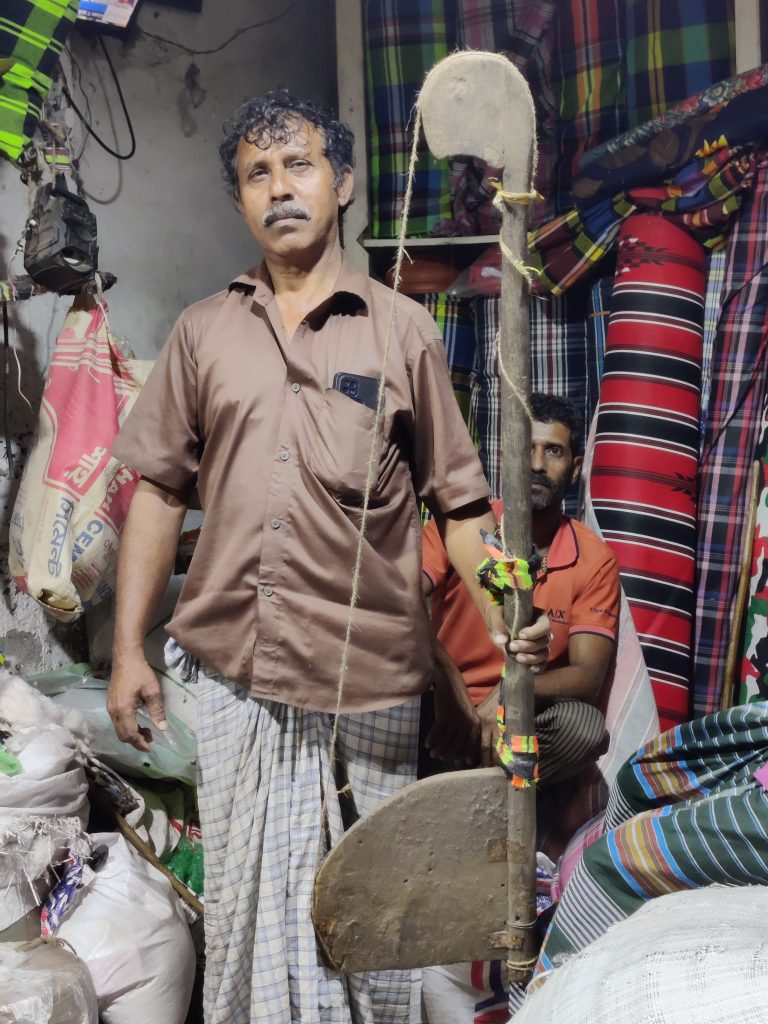Dhunkar

In the winter season, especially in rural Bengal, the sight of Dhunkars going from house to house to make lep-toshak with dhunat hanging around their neck/shoulder is still visible. The main instrument of Dhunkar is Dhunat. Made of bamboo, cane and wood, the instrument looks like a bow. The wood is wide in circumference at the bottom and rounded at the top. A special kind of rope made of cow’s muscular system is tied over and under the wooden head. The cotton is cleaned and stretched by holding it close to the cotton and beating it with a mallet. In this way, cotton was milled and used to make covers, toshaks, pillows, jajims according to the design. Dhunkar’s team usually consisted of 2/3 people. The instrument was hung on one person’s shoulder, cotton and cloth on the shoulders of the other two. They went from house to house to meet the needs of the people. Such a scene is no longer seen. At one time they could be seen in the city. Advances in technology have led to better quality machines being used for cleaning cotton today. There is no use of dhunat. As a result, the work of Dhunkar professionals has decreased at a great rate. At present, most of this class of people work as artisans in the markets of Gramganj and in the textile shops of the city. But if they have work, they have income, if they don’t have work, there is no income. As a result, it has become difficult to run a family. They remain invisible to the people of the society. But they also have a life – have a family – have a little desire to live. After going out in search of these professionals, I went to Mohammadpur in the capital and Keraniganj across the Burigangariver and talked to some of them – they were spending idle time. Shahida Anwar Welfare Foundation is proud to stand by them.
- sawf
- May 3, 2023
- 11:52 am
- No Comments
